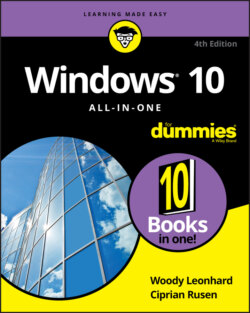Читать книгу Windows 10 All-in-One For Dummies - Ciprian Adrian Rusen, Woody Leonhard - Страница 73
WHAT HAPPENED TO WINDOWS PHONE?
ОглавлениеWindows Phone turned into a multibillion-dollar tragedy that sent tens of thousands of people to the unemployment line and put a major drain on Finland’s economy.
Finnish company Nokia pioneered the Windows phone and sold millions of them. Nokia sales started drifting off, and Microsoft was faced with a big choice: Either prop up Nokia or lose its only major outlet for the Windows Phone software. Long story short, Microsoft sent one of its execs to lead Nokia, ultimately buying Nokia in April 2014 for $7.2 billion. Three months later, Microsoft announced it was laying off 18,000 Nokia employees.
Fifteen months later, the Nokia phone business had crashed and Microsoft wrote off $7.6 billion in acquisition costs. In May 2016, after several more rounds of layoffs and write-offs, Microsoft announced it was selling the Nokia brand and its smartphones to Foxconn, the company best known for manufacturing computers throughout Asia.
Microsoft sold the remnants of the Nokia brand for $350 million, and Foxconn immediately announced plans to sell Android phones. Windows Phone was rebranded into Windows 10 Mobile but that did not help. In December 2019, Windows 10 Mobile had reached the end of its life.
Windows Vista and Windows 7 both had Ultimate editions, which included absolutely everything. Windows 10 doesn’t work that way. If you want the whole enchilada, you have to pay for volume licensing.
Windows Media Center — the Windows XP–era way to turn a PC into a set-top box — is no longer available in any version of Windows 10. Do yourself a favor and buy a Chromecast, or use your cable company’s DVR if you really have to record TV.
Any edition of Windows 10 running in S mode runs only apps. That bears repeating: S mode doesn’t run old-fashioned Windows programs. S mode is restricted to running just Windows 10 apps in the Microsoft Store. You can have Windows 10 Home, Pro, Enterprise, and Education, all running in S mode.
This book covers Windows 10 Home and Windows 10 Pro. Most of the content is applicable also to Windows 10 Enterprise and Windows 10 Education. Only a little bit of the content applies to Windows 10 in S mode.
Before you tear your hair out trying to determine whether you bought the right version or which edition you should buy your great-aunt Ethel, rest assured that choosing the right version is much simpler than it first appears. Flip to “Narrowing the choices,” later in this chapter. If you’re considering buying a cheap version now and maybe upgrading later, I suggest that you first read the next section, “Buying the right version the first time,” before you make up your mind.
